Thursday, April 18, 2013
Today I will be reviewing the World War II Victory Medal, which was only considered the Victory Ribbon prior to 1946. The medal was officially released early 1946 and awarded to all branches of the military for service from 1941-1946. Although the war basically ended in 1945 Truman did not officially end World War II until the last day of 1946. These medals are very easy to find and you will find them in all sorts of condition, from mint to just the medallion with no ribbon or ribbon ring present. In my opinion all WWII medal collectors should a this medal in his or her collection! Here's the best part about this medal... It's usually under $20.00!
AVERAGE PRICE:
Un-boxed- $8-$15
Boxed- $10-$25
Left- 1946 issue
Center- 1947 issue
Right-1970's issue
 MARKINGS:
MARKINGS:
The medal's front depicts Nike standing victorious, holding a broken sword, representing the broken power of the Axis, with one foot upon the helmet of Mars, the Roman god of war, representing the end of the conflict.
This is an example of a first issue 1946 United States Victory Medal, notice the slotted sewn brooch. The initial issue of these medals was on a slotted sewn brooch. So if you see one of these, rest assured it is the earliest type of the Victory medal.


This example is a later 1946-1947 issue, notice the un-marked crimped brooch. These brooches are just a little wider than the 1949 and on US crimp brooch.
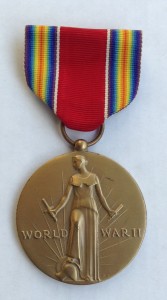

Lastly we have here a Vietnam era WWII Victory Medal re-strike, notice the mark L1G1 on the reverse brooch. Many beginning collectors miss these kind of details. I myself had 12 out of 17 re-strikes when I first started! I had no idea the US Government officially re-struck these medal from the 1970's through current. You can see the detail on these later strikings is terrible compared to the original 1940's counterparts. (Where's the sun-rays?)
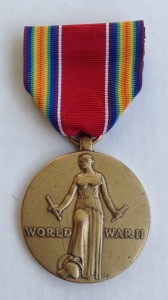

Further Reading:
http://en.wikipedia.org/wiki/World_War_II_Victory_Medal_(United_States)
CLINTON FOSTER
www.MEDALMULISHA.com
Thursday, March 7, 2013
 Today, I will be reviewing the basics of the World War 1 German/Prussian 1914 Iron Cross 1st Class & 2nd Class, (Eisernes Kreuz 1 - Eisernes Kreuz 2). These medals are highly desired by all collectors, and they are very affordable for a near 100 year old antique! Iron Crosses are beautifully constructed from 2 silver or silver/alloy frames with a center core made of Iron for Heer (Army) Crosses, and Brass for Kriegsmarine (Navy) Crosses. Contrary to what some un-informed sellers say, all genuine Iron Crosses from 1813-1957 were made with 3 piece construction and never from solid 1 piece construction. All others are to be considered commemorative, reproductions, or fake. The Iron Cross has been officially instituted 5 times: 1813 - 1870 - 1914 - 1939 - 1957, I will cover the remaining years in later installments.
Today, I will be reviewing the basics of the World War 1 German/Prussian 1914 Iron Cross 1st Class & 2nd Class, (Eisernes Kreuz 1 - Eisernes Kreuz 2). These medals are highly desired by all collectors, and they are very affordable for a near 100 year old antique! Iron Crosses are beautifully constructed from 2 silver or silver/alloy frames with a center core made of Iron for Heer (Army) Crosses, and Brass for Kriegsmarine (Navy) Crosses. Contrary to what some un-informed sellers say, all genuine Iron Crosses from 1813-1957 were made with 3 piece construction and never from solid 1 piece construction. All others are to be considered commemorative, reproductions, or fake. The Iron Cross has been officially instituted 5 times: 1813 - 1870 - 1914 - 1939 - 1957, I will cover the remaining years in later installments.
AVERAGE PRICE:
EK1 unmarked: $100-$175
EK1 maker marker/silver mark: $175.00-$300.00
Premium Rare Cross: (Screw-back, Vaulted, cased): $300-$500
EK2 unmarked: $50-$70
EK2 maker marker/silver mark: $60.00-$100.00
Premium Rare Mint Cross: (Rare maker, cased): $100.00-$200.00
MARKINGS:
Crown: Prussian Crown.
1914: Instituted for World War 1.
FW: King Frederick William III.
Oak-leaves: Prussia/Germany National Tree Oak.
W: kaisers Wilhelm II.
WW1 EK1 MANUFACTURES CODES
WW1 EK2 MANUFACTURES CODES
FURTHER READING
Authentic 1914 Eisernes Kreuz 1 (EK1):
Notice the slight seams on the outside rim where the frames come together, near all EK1's will have at least 1 frame side where you can locate a seam. You can see the separation gap between the center core and the frames, this gap varies by manufacturer. Some cores are tight in the frames and other cores are loose in the frames, by holding onto just the frame you can shake it and hear the core rattle within the frames. EK1's came in several versions and variations including the most common pin-back and screw-back. You will often find a manufacturers mark stamped on the reverse side of the medal, on the pin-back, screw-back, or the back of the medal itself in various areas.
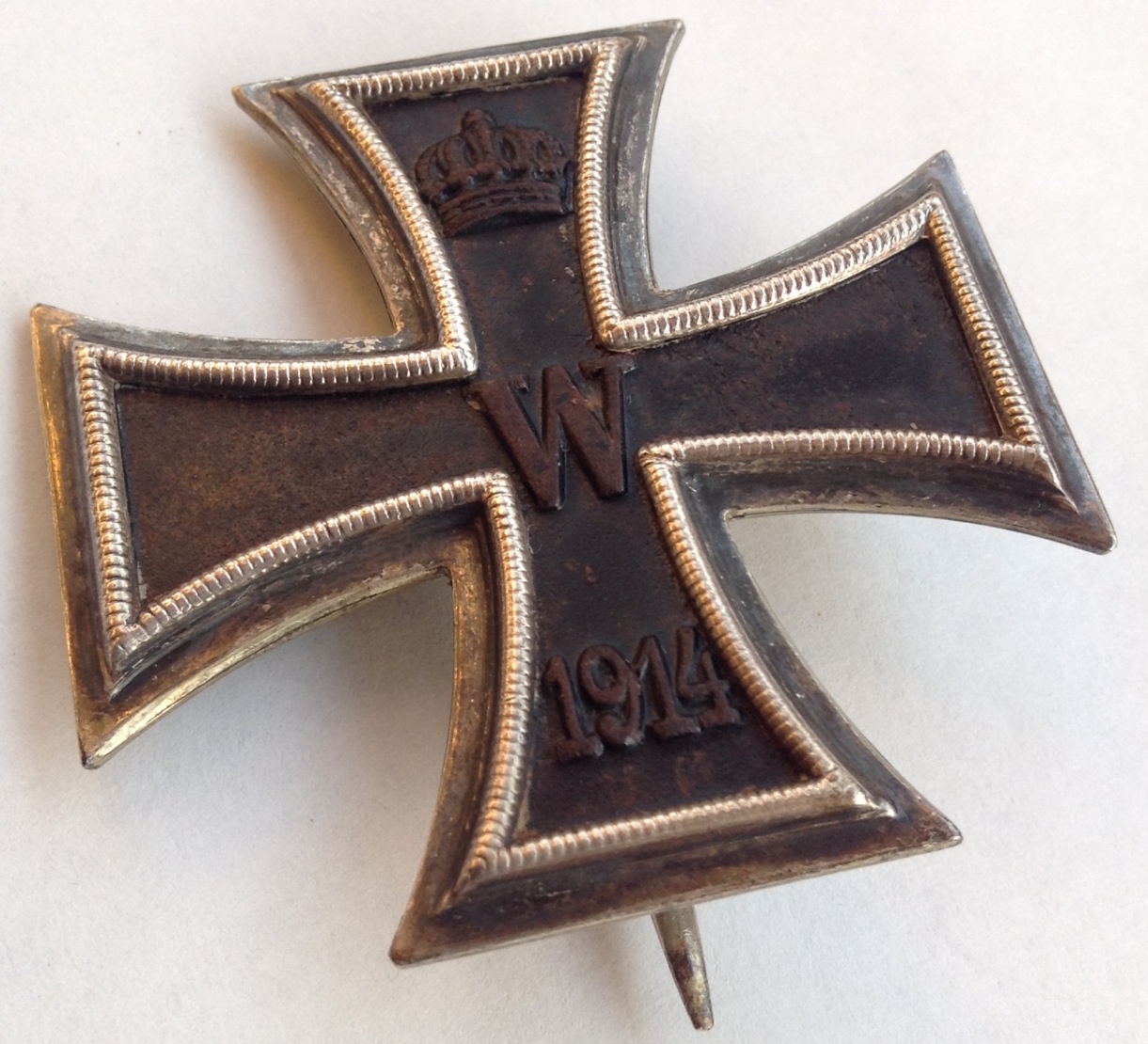
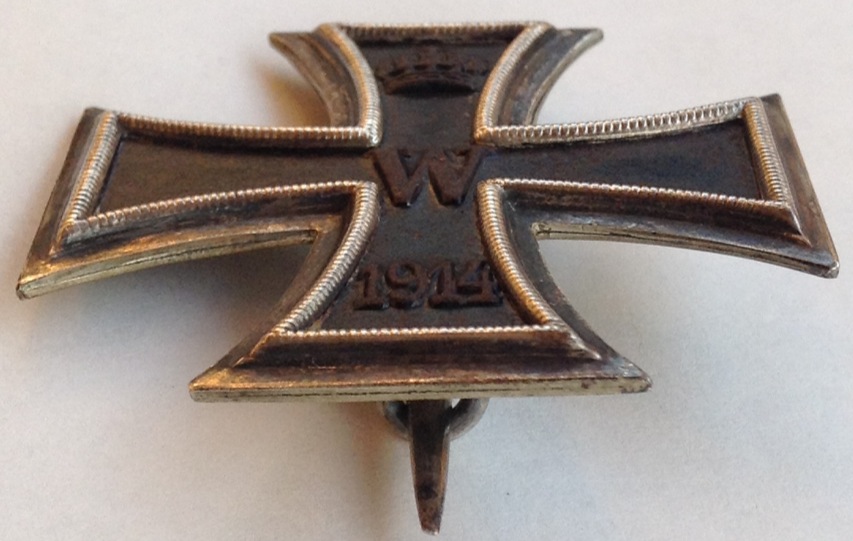
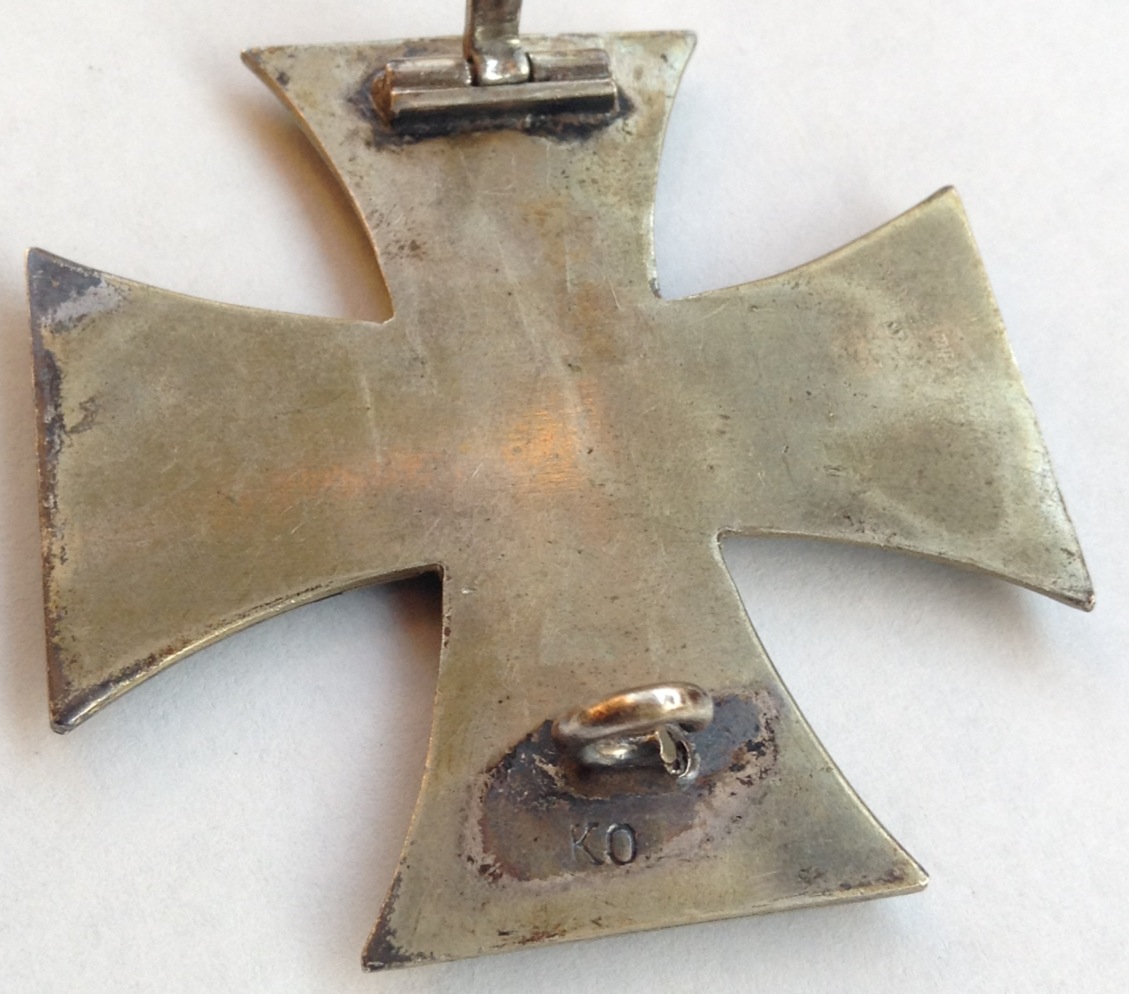
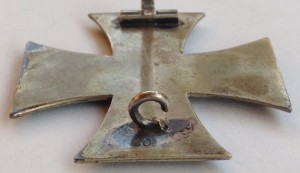
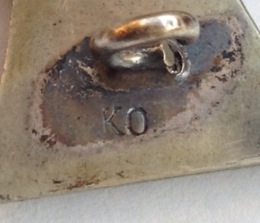
Authentic 1914 Eisernes Kreuz 2 (EK2):
Again with a EK2 you will notice the seams on the outside rim of the frames, and the gaps between the core and frames. This EK2 differs from the EK1 by having a second side with the date 1813 representing the medals 1st institution date and being suspended by a ribbon. You will most likely find the manufactures mark stamped on the ribbon ring, or the suspension ring (the latter being more rare).
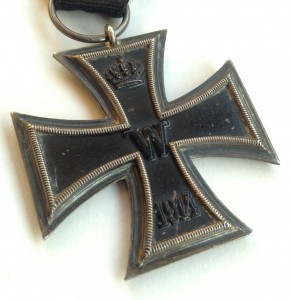
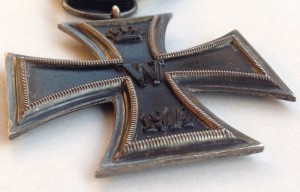
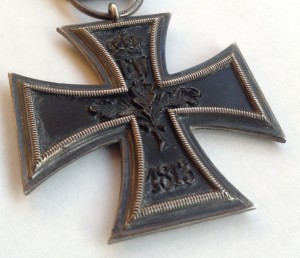
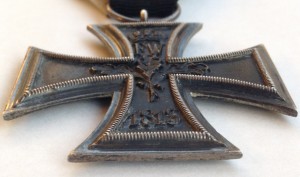

(REPRODUCTION) OLD FAKE 1 PIECE CONSTRUCTION EK1

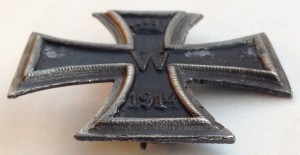
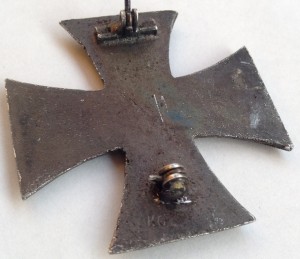
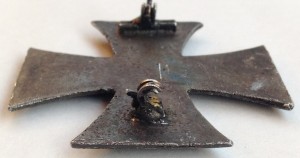
(REPRODUCTION) OLD FAKE 1 PIECE CONSTRUCTION EK2


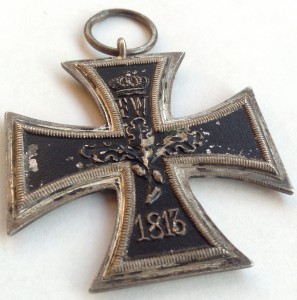
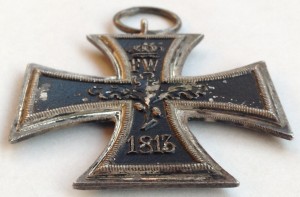
Wednesday, January 2, 2013
What do these two country have in common during the World War II? They have WWII specialty items. When you think of Germans, the items that will come to your mind are knives and helmets. And when someone mentions Japanese, the first WWII item that will pop out are swords! Different kind of swords and samurais.
 The first helmets issued received only one decal on the left side of the helmet. In 1943 this factory applied decal was discontinued in order to comply with orders issued by the Supreme Commander of the Wehrmacht. Helmets of this type are characteristic of having rolled edges and stamped air vents that are embossed directly into the steel shell. Paint finishes range from medium to very dark blue-gray in overall tone with semi-rough to rough outer texture. Decals on the M1940 are always the second patternvariety. The M1940 Luftwaffe helmet is one of the most abundant of all German helmets.
The first helmets issued received only one decal on the left side of the helmet. In 1943 this factory applied decal was discontinued in order to comply with orders issued by the Supreme Commander of the Wehrmacht. Helmets of this type are characteristic of having rolled edges and stamped air vents that are embossed directly into the steel shell. Paint finishes range from medium to very dark blue-gray in overall tone with semi-rough to rough outer texture. Decals on the M1940 are always the second patternvariety. The M1940 Luftwaffe helmet is one of the most abundant of all German helmets.
The M1940 has a stamped air hole made to look like a rivet, instead of the actual rivet found on the M1935. The M1940 was made of an improved steel made from manganese-silicon. The M1940 also was manufactured through a process of hot stamping the metal. The M1940 is like the M1935 with regard to the rolled steel edges.
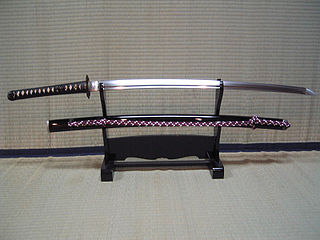 WW2 Japanese Antique Samurai Sword/Shinto/Nihonto/KATANA IN KOSHIRAE 29+1/6"
WW2 Japanese Antique Samurai Sword/Shinto/Nihonto/KATANA IN KOSHIRAE 29+1/6"
The nihontō would be carried in a saya (sheath) and tucked into the samurai's belt. Originally, they would carry the sword with the blade turned down. This was a more comfortable way for the armored samurai to carry his very long sword or to draw while mounted.
Nihonto is one of the traditional bladed weapons of Japan. The most commonly known type of Japanese sword is the katana, which, like the similarly formed tachi, is a single-edged and, usually, curved long sword which was traditionally worn by samurai from the 1400s onwards. The tachi became the primary weapon on the battlefield during the Kamakura period, used by cavalry mounted samurai. The sword was mostly considered as a secondary weapon until then, used in the battlefield only after the bow and spear were no longer feasible
See more of the beautiful items by clicking the text links below.
ITALIAN DAGGER, ITALIAN KNIFE, MVSN, FASCIST



























